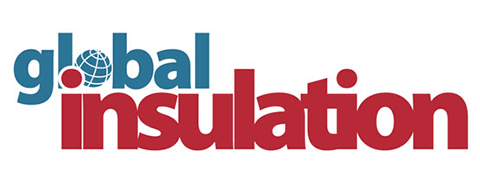Insulation industry news from Global Insulation
Search Insulation News
Israel to replace asbestos roofs reachable by Gaza missiles
Written by Global Insulation staff
14 August 2014
Israel: The release of asbestos fibres from hundreds of roofs that were shattered by missiles fired on southern Israel has caused a spreading environmental hazard, according to state authorities. A plan to remove and replace all of the asbestos roofs built in the border area before 2015 was announced.
Asbestos roofs are becoming a dangerous threat, according to the Environmental Protection minister Amir Peretz. "I have informed the regional council that, in order to protect residents from the threat of asbestos, we will prepare a joint programme with all the relevant bodies to replace the asbestos roofs on hundreds of houses along the front line with Gaza," said Peretz.
Israel banned the use of asbestos in building projects in 2005. Replacing all asbestos roofs in the Gaza perimeter region will cost an estimated US$2.3m, part of which will be covered by the residents.
Johns Manville realigns engineered products business to drive growth
Written by Global Insulation staff
30 July 2014
US: Johns Manville (JM) has announced that it will merge its American, European and Asian activities for engineered products into one global business unit. JM's engineered products business manufactures glass and polyester nonwoven products for the building and construction industry, filtration and battery separation media, reinforcement glass fibres for composites and specialty industrial glass products. JM said that the reorganisation will enhance its ability to serve increasingly global needs in the composites, filtration and energy storage markets.
"Transitioning to one engineered products organisation furthers our global reach while maintaining the regional support our customers require," said JM's president and CEO, Mary Rhinehart. "The new structure allows us to build on what we already do well in different regions. It will expedite our growth and help us deliver an even more powerful JM experience to our customers and our employees."
Previously, JM operated two engineered products business units: one for the Americas and one for Europe and Asia. The realignment keeps some of the regional components, mostly within the nonwovens business, while the composites, filtration and energy storage businesses will be managed more globally.
Enno Henze, who is responsible for JM's nonwovens, fibres and glass textiles businesses in Europe, as well as its nonwovens business in China, will lead the newly created Engineered Products business as senior vice president and general manager. Henze will relocate to JM's global headquarters in Denver, USA from Germany to lead the Engineered Products business. Henze said that the new organisation is designed to support JM's Engineered Products customers worldwide.
Rockwool reports strong sales growth in the first quarter of 2014
Written by Global Insulation staff
30 July 2014
Denmark: Rockwool has reported that during the first quarter of 2014, which ended on 31 March 2014, it generated sales of Euro485m, up by 15% year-on-year.
Earnings before interest and taxes (EBIT) were Euro28.4m, up by 39% year-on-year, including Euro7.40m from the insulation sector, which was a Euro4.9m increase on the same period of 2013. EBIT for holding companies was Euro11.8m, up by Euro1.7m. Net profit during the quarter was Euro19.1m, a Euro5.8m improvement on 2013. Costs were Euro1.6m, down by Euro0.5m in 2013.
External sales of insulation products were Euro374m, up by 9% compared to the same period of 2013. In Eastern Europe, sales increased by 20%, primarily due to continued positive growth in Russia and a good market recovery in Poland. Insulation sales were positive in all world regions except for China.
Rockwool expects to achieve Euro127m in net profit for the whole of 2014 off the back of continued market recovery in many regions, particularly Russia.
Synbra acquires Knauf Insulation business
Written by Global Insulation staff
25 July 2014
Benelux Region: Building insulation and packaging group Synbra is consolidating its position in the Benelux Region, which encompasses Belgium, Holland and Luxembourg, with the acquisition of the local expanded polystyrene (EPS) activities of Knauf Insulation.
Synbra's subsidiary, IsoBouw Systems, is set to take over the region's Knauf manufacturing and sales operations, including an EPS plant in Oosterhout Municipality, Holland, by 1 August 2014. The Oosterhout plant produces EPS and wood wool products, although IsoBouw Systems said that it plans to close the EPS unit.
Synbra's Etten-Leur said that the acquisition is a strategic move for IsoBouw, which will continue to supply EPS insulation products from its own plants in the Wijchen, Someren and Oldenzaal Municipalities in the Netherlands.
"IsoBouw is the EPS specialist in the Benelux Region," said IsoBouw's general manager, Will Kemperman. "The acquired business unit fits perfectly with our current activities. This gives us even more space to focus on innovative product developments." The move will also strengthen the position of its existing customers in the market.
Knauf Insulation retains a glass wool production facility at Visé, Belgium as well as EPS plants in Germany at Wadersloh, Bad Waldsee and Hermeskeil. The firm also operates extruded polystyrene (XPS) plants in France, Italy and the UK.
Owens Corning reports US$21m of profit for second quarter of 2014
Written by Global Insulation staff
25 July 2014
US: Owens Corning has reported second quarter 2014 profits of US$21m, down from US$49m in 2013. Its net sales were US$1.36bn, up slightly from US$1.35bn in 2013. Chairman and CEO Mike Thaman said that the insulation and composites business units met expectations for the first half of 2014, offsetting weaker financial performance in its roofing division.




